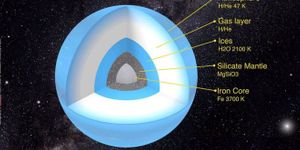NASA's New Wing Design Could Make Planes 50% More Fuel Efficient
NASA has long expressed interest in its development of futuristic X Planes, which would be better for the environment, as well as better for humanity for a number of reasons.
In addition to be being quieter, better looking, and more technologically connected, X Planes would be significantly more fuel efficient, thus making them better for the environment around them.
NASA is working with Boeing to produce a new type of airplane wing to make airplanes more fuel efficient and environmentally friendly. The latest prototype, which is of a wing that uses air tunneling to its advantage, could cut emissions and fuel costs by up to 50% from current aircraft designs.
The new wing design, which uses a truss brace to stabilize the thinner design to the aircraft, is pictured below with NASA aerospace researcher Greg Gatlin.

As NASA explains in a statement, every little bit of weight that you can shave off of an aircraft will make it more fuel efficient in some way. That’s why they’re working on a wing that is lighter, longer, and thinner than current generation airplane wings.
The longer surface area will give it more leverage as it moves through the air, but by being thinner and lighter, it’ll remove a lot of unnecessary weight that comes with aircrafts, allowing NASA to make a more fuel efficient airplane that produces less emissions, making it better for the environment overall.
Because commercial airways are so widely used today to get people where they need to go, reducing airplane emissions will bring us one step closer to reducing global warming and moving forward with greener objectives.
In addition to fuel efficient airplanes, NASA is also working on a “low boom” supersonic jet aircraft that would be able to break the speed of sound without making annoying noises for anyone below it (such as residential areas) as well as a special vertical landing plane.
More is to come as NASA continues to use its additional budget wisely in its scientific playground for technological advancements.
Source: NASA








